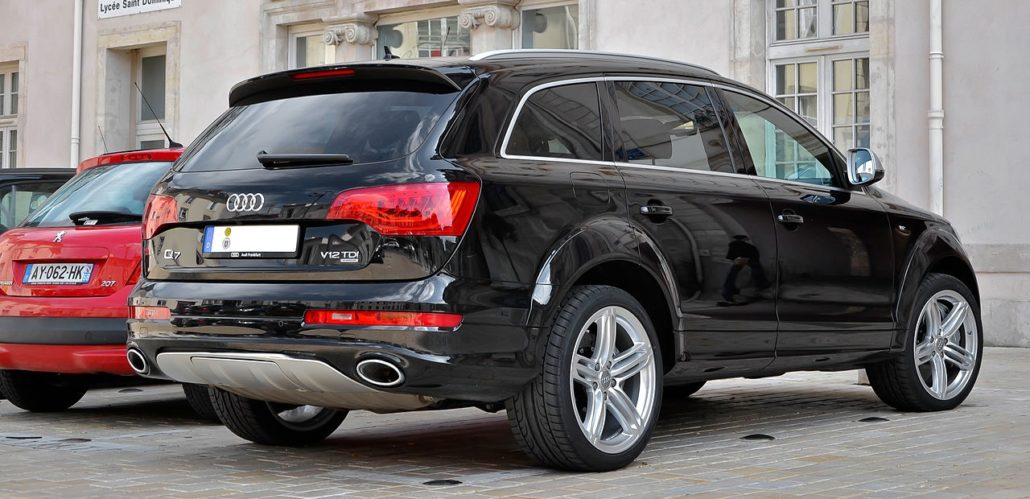Scroll down below to read our blog, which will inform you about the best practices for upgrading the audio on the AUDI Q7 (2006 – 2015) Model 4L
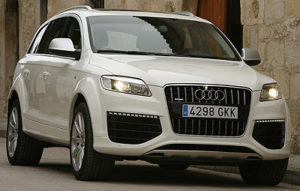
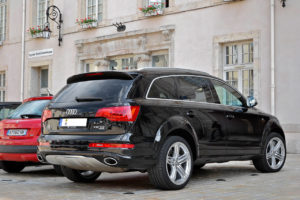
AUDI Q7 4L (2006-2015)
Main Entertainment Touchscreen Upgrade:
Aftermarket entertainment upgrades for the Audi Q7 are available from many brands and manufacturers today, a reliable and premium option among them is EUROFIT.
EUROFIT android entertainment touchscreen upgrade fits in straight / bolt-on to the car’s screen slot and integrates seamlessly with the car’s electronics via a bolt-on harness and connectors.
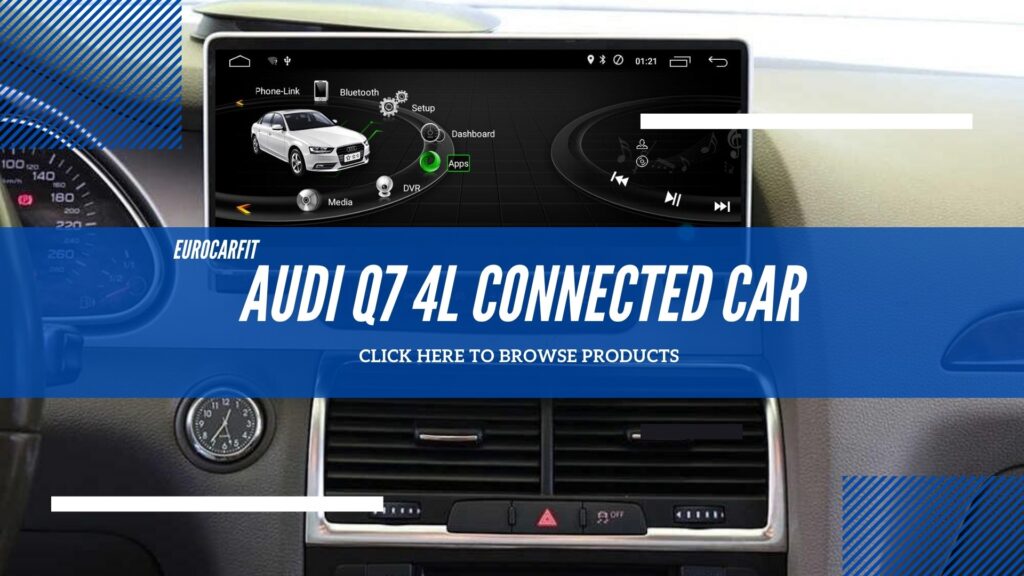
This upgrade includes features like,
Capacitive Touchscreen interface,
BMW iDrive controller fully integrated with menu functions,
Dual USB slots,
Bluetooth handsfree and music streaming,
WiFi connectivity for internet and screen mirroring,
inbuilt GPS navigation like Google Maps, Sygic, etc,
HD video playback in motion,
Front and Reverse Camera integration,
Google play store to install new apps,
Lossless Music playback with latest formats support,
Optional Apple Carplay and Android Auto support through USB,
Optional aftermarket Tire Pressure Monitoring System (TPMS),
ODB Car diagnostics through Bluetooth or WiFi dongle.
SCROLL DOWN TO VIEW –
SYNOPSIS – STANDARD SLOTS IN THE CAR – UPGRADES & SOLUTIONS
Synopsis:
The Audi Q7 is a good full-size SUV premium audio upgrade. The car has a total of between 12 to 19 speaker slots (depending on variant) which are evenly distributed and staged high up on the dashboard, mainly in front to give the driver and co-passenger a rich and clear music experience. The 19 speakers, Bang, and Olufsen OE audio setup on the top end Q7 come packed with rich features like ‘3D-Surround’ and ‘Acoustic Lensing’ which mimic a virtual surround sound. Being positioned in appropriate slots and tuned to deliver a crisp and clear audio response to the cabin occupants. Though this audio setup sounds quite balanced, it lacks headroom at higher volumes. The B&O audio setup is a good benchmark to match or to improve upon in case of an audio upgrade on a Bose audio Q7 variant. This could be a strategy to push audio lovers to their costlier B&O sound variant.
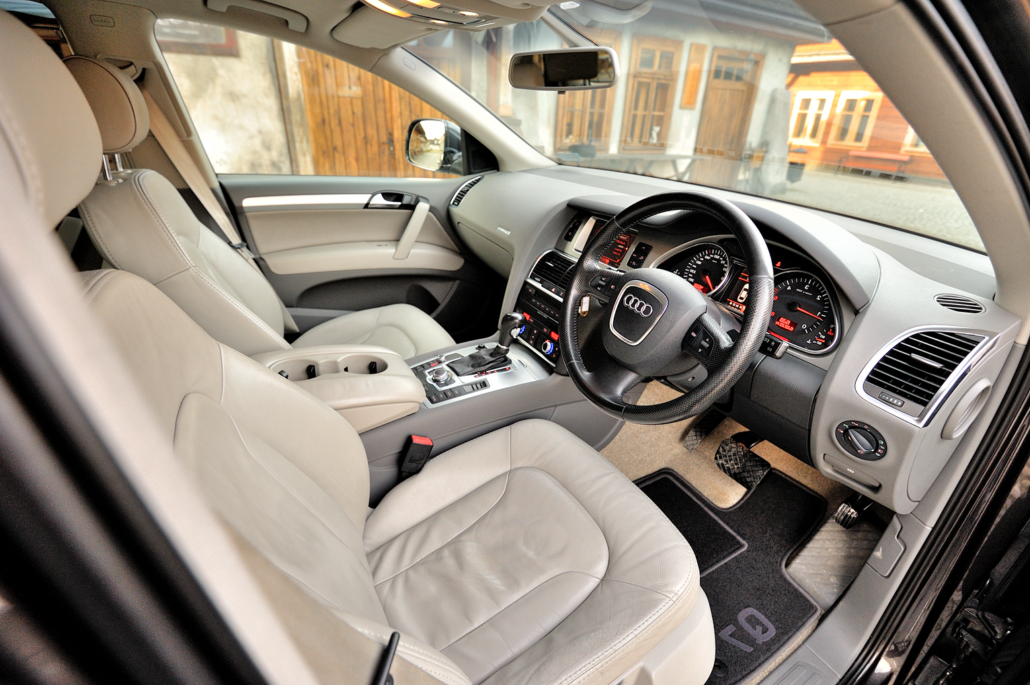
Standard Speaker slots / locations of equipment in Non-B&O variants:
8 speakers in 4 doors, 1 subwoofer/bass driver on the rear parcel shelf, and a center channel speaker upfront in the dashboard. These variants come with an amplifier which powers all the speakers in the car and is located in the spare wheel well in the car’s boot.
Standard Speaker slots / locations of equipment in B&O variants:
8 speakers in 4 doors, 4 speakers in the dashboard (Center channel speaker and tweeter along with 2 mid-range drivers), 4 tweeters / high-frequency drivers on the front A-pillars, 2 speakers, and 1 subwoofer/bass driver in the spare wheel well. These variants come with an amplifier which powers all the speakers in the car and is located in the right of the car’s boot.
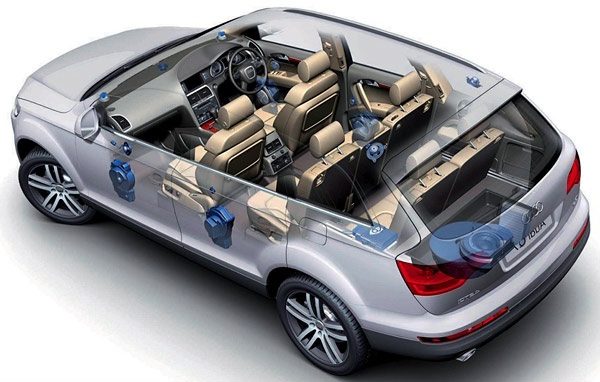
Pros:
Due to the full-size SUV build and overall cabin volume, the Q7 does not need very powerful speakers in order to produce a clear and balanced music experience. The doors are built quite strong and often sealed off with a plastic cladding or aluminum cladding which produces a strong bass response compared to other cars in the same category. On the Bang & Olufsen variants, speakers are placed in locations to create a 3D surround effect. In order to get the right amount of detail, placement of speakers and especially tweeters is very vital in any car. The B&O variants are acoustically very good compared to the Non-B&O variants.
Cons:
Almost all AUDI cars suffer plastic creaking and degradation. Though this problem can be addressed to quite some extent with damping and soundproofing, some minor creaks here and there still crop up in some AUDI cars over time.
Solutions:
Full Upgrade on Non-B&O Variants:
The cleanest method of upgrading the audio on any premium car is to follow the least invasive wiring method. The right way of upgrading the audio on the non-B&O variants is to start with configuring an aftermarket sound processor/signal processor connected to the AUDI MMI acting as the master controller for the rest of the equipment to be added. The next step is to select a set of speakers and matching amplifier(s) staying well within the provided space in the car, which in the case of a Q7 is a medium amount of clearance. The final speaker configuration is a front 2Way or 3Way setup (Mid-range speakers and Mid-bass speakers in doors, tweeters in the A-pillars) and Rear 2Way (Tweeter and Mid-range speakers in doors) speaker setup. An 8” Subwoofer replacement is to be placed in the stock location in the spare wheel well in the boot or a Subwoofer in an enclosure for deeper and more powerful bass response. All of this has to be powered by amplifiers with matching power and sound signatures.
“ Some Tech Talk-
A Digital Signal Processor sums up the signals from the Audi Main Entertainment Unit to flatten the input signal to provide a clean and controlled output signal to the aftermarket amplifier(s) to reproduce a very clear audio experience in the cabin. “
Partial Upgrade on BOSE / Bang & Olufsen Variants:
Now, this variant of the Q7 already has a good-sounding setup, and upgrades are usually partial. What is needed is a compatible pre-amp unit that will allow the existing BOSE/ B&O amp to operate seamlessly with the aftermarket equipment we plan to add. Tuning and Room / Cabin analysis have to be performed extensively to recognize the points at which the Frequency responses have to match and merge. The installation is very similar to the Non-B&O variants, but the analysis and tuning of the audio take some time and patience in order to achieve a perfect balanced sound.
